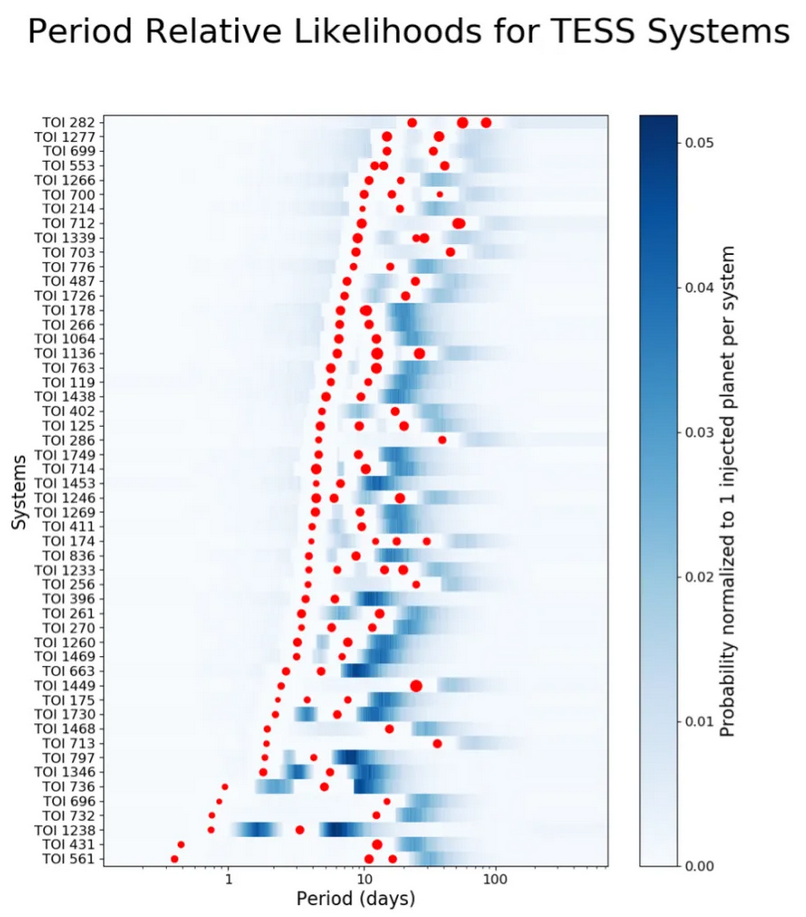Dynamite
Dynamite
Exoplanets remain challenging to find and almost all multi-planet systems remain only partially explored. By combining exoplanet demographics with orbital dynamical considerations, Dietrich & Apai (2020, AJ in press) developed the dynamical multi-planet injection tester (DYNAMITE), the first algorithm to predict where yet-to-be-discovered exoplanets likely reside in only partially-explored exoplanet systems.
DYNAMITE draws from exoplanet population statistics derived from the Kepler exoplanet sample and in multiple tests successfully predicted planets in TESS-discovered multi-planet systems.
The DYNAMITE has been applied to all TESS multi-planet systems to predict where, within each system, additional planets are most likely to reside and how large these planets. Results from DYNAMITE guide follow-up observations exoplanetary systems.

Test results for DYNAMITE prediction vs. observations. In the Kepler-154 system planet f was hidden from DYNAMITE. Based on the other planets’ parameters, DYNAMITE correctly predicted not only the period, but also the inclination and size of Kepler-154 f. From Dietrich & Apai (2020).
The DYNAMITE paper is in press in the Astronomical Journal and available via arXiv (Dietrich & Apai 2020).
The DYNAMITE python code is available through GitHub.

